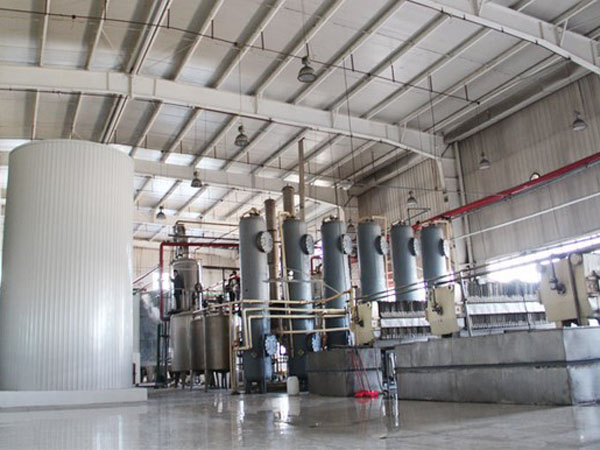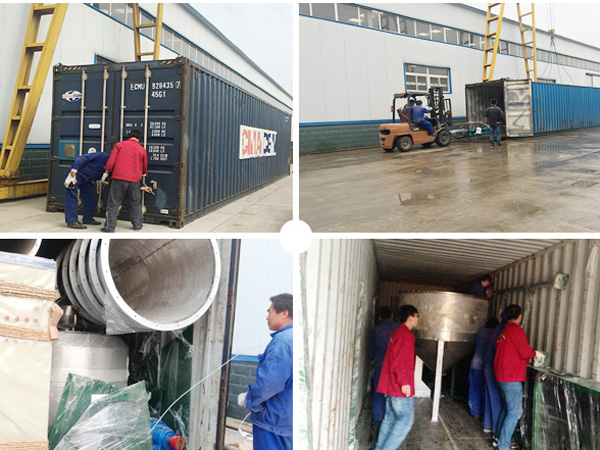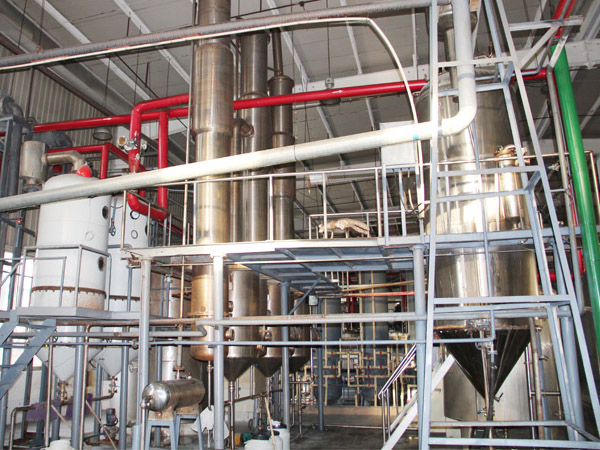Glucose Syrup Production Line
Glucose Syrup Production Line
1.Liquefaction:Put the starch milk prepared to the 1st injector and inject steam directly to the starch milk. Make the temperature rise to 110ºC quickly and keep it at the stagnant are for 30 seconds. The pressure in the stagnant are should be around 0.2 Mpa. After entering the 1st flash evaporator, lower the temperature to 98ºC and keep it for 20 minutes. The material, after initial hydrolysis, is with a lower viscidity. The material is then put into the 2nd injector by the pump, its temperature reaching 135ºC quickly. It gets to the 2nd flash evaporator after staying in the stagnant area for around 10 seconds. The temperature in the 2nd flash evaporator declines to 95ºC. Put the left 2/3 α-Amylase to the material through metering pump. The DE volume of the material would be between 12 and 18 after its staying in the tubular reactor for 90-120 minutes.

2.Sccharification:Put hydrochloric acid into the material after liquefaction and make the PH volume to 4.0-4.6, while lowering the temperature from 90ºC to 60ºC. Add fungal enzyme into it and keep stirring at that temperature. The saccharification period will take 18 to 24 hours.
3.Refining:After refining, impurities, protein, fat, pigment, and edible salt are removed from the saccharification liquid. The material should now first be put into the vacuum filter. The best temperature for filtration is 70ºC to 85ºC. The insoluble protein and fat is separated and the clear and slightly colored saccharification liquid comes into being. The next section is charcoal absorption which further separates the insoluble protein and pigment. Keep adding in active carbon at the temperature between 75ºC and 85ºC in order to make the material have enough contact with active carbon. Then put the material into filter to separate carbon from it. Another round of check and filtration is needed to make sure there is no more carbon.
4.Ion exchange:After filtration, amino acid and Inorganic salts are separated from the saccharification liquid. The temperature of the material should be lowered to 48~50ºC to take ion exchange, firstly cation exchange column resin, and secondly anion-exchange column resin. During cation exchange colume, Na, Fe, Ca, Cu and a part of amino acid are separated, and during anion-exchange column, chloride, sulfate, phosphate, and most of the soluble amino acid can be taken off, which makes the refined saccharification liquid come into being.
5.Concentration:The DS volume of saccharification liquid after refining is around 30%. Adjust its PH volume and put it into the 4-effect falling-film evaporator which will concentrate its density to 60%. After that, the single-effect evaporator will make its density to 78%. The finished syrup is thus made.
6.Saccharification: Take part of the liquid produced after the liquefaction period and add in hydrochloric to adjust the PH volume to 4.0~4.6. Lower the temperature from 90ºC to 60ºC. Put in saccharifying enzyme and keep stirring. The saccharification will last for about 48~60 hours. The DE volume after saccharification should be above 95.
7.Refining:After refining, impurities, protein, fat, pigment, and edible salt are removed from the saccharification liquid. The material should now first be put into the plate-and-frame filter. The best temperature for filtration is 70ºC to 85ºC. The insoluble protein and fat is separated and the clear and slightly colored saccharification liquid comes into being. The next section is charcoal absorption which further separates the insoluble protein and pigment. Keep adding in active carbon at the temperature between 75 and 85 in order to make the material have enough contact with active carbon. Then put the material into filter to separate carbon from it. Another round of check and filtration is needed to make sure there is no more carbon..
8.Ion exchange:After filtration, amino acid and Inorganic salts are separated from the saccharification liquid. The temperature of the material should be lowered to 48~50ºC to take ion exchange, firstly cation exchange column resin, and secondly anion-exchange column resin. During cation exchange colume, Na, Fe, Ca, Cu and a part of amino acid are separated, and during anion-exchange column, chloride, sulfate, phosphate, and most of the soluble amino acid can be taken off, which makes the refined saccharification liquid come into being.
9.Concentration:The DS of saccharification liquid after refining is around 30%. Adjust its PH volume and put it into the 4-effect falling-film evaporator which will concentrate its density to the range from 70ºC to 75ºC.
glucose corn syrup processing lRead More
glucose syrup production plant from cassava pdf,glucose corn syrup processing line,glucose syrup making machine,production of glucose syrup f...
Introduction of Glucose syrup dRead More
Glucose syrup also known as confectioner's glucose, is a syrup made from the hydrolysis of starch. Glucose also is called starch sugar. Maize...

Annual capacity 50,000tons gluc
Annual capacity 50,000tons glucose syrup production plant, this capacity project our company totally installed three. Recently, we complete the third that is the newest glucose syrup production plant project
Read More
Daily production of 100 tons ma
This corn syrup production plant project all equipments design, manufacturer and delivery made by SIDA Company, with corn processing annual capacity 10 million tons, the corn syrup production capacity 8 million tons. Manufactured for our Nig
Read More

 Phone669
Phone669
 hoan366@hotmail.com
hoan366@hotmail.com




